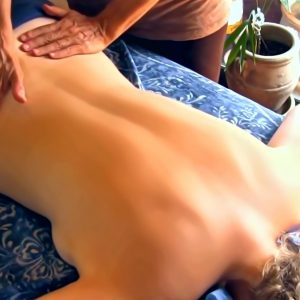 Myofascial pain syndrome is complicated and multi-focal. The ultimate goal of myofacial therapy is to loosen and stretch the fascia so that it – as well as other structures – are able to move more freely, thereby restoring motion and relieving pain. Myofascial therapy is sometimes referred to as myofascial release therapy and/or myofascial trigger point therapy.
Myofascial pain syndrome is complicated and multi-focal. The ultimate goal of myofacial therapy is to loosen and stretch the fascia so that it – as well as other structures – are able to move more freely, thereby restoring motion and relieving pain. Myofascial therapy is sometimes referred to as myofascial release therapy and/or myofascial trigger point therapy.
What is the Fascia?
Fascia is a layer of connective tissue and is a part of the support structure of spine and musculoskeletal system. In addition to the multitude of bones and joints that make up the spine, there is also a network of layered, interwoven muscles. These muscles exist to move and stabilize the spine, assist with the movement of the shoulders and arms, and aide respiratory efforts. The best way to envision the fascia is as an expansive web that runs all throughout the body – basically like a layer of connective tissue (similar to that of a tendon or ligament) that begins underneath the skin and extends to deeper layers, too.
In a normal, healthy state the fascia is relaxed and supple – not unlike the weave of a loosely knit sweater – and helps keep muscles gliding smoothing as well as preventing them from adhering to other structures within the body. However, when restricted, the fascia becomes rigid and can create tension, pulls, knots – sometimes at a pressure as great as 2,000 pounds per square inch.
The fascia is comprised of three layers: the superficial fascia, which lies directly below the skin (this layer stores fat and water and allows nerves to run through it which, in turn, allows muscles to move the skin); the deep fascia, which surrounds muscles, bones, nerves, and blood vessels; and the deepest fascia, which is found within the dura of the cranial sacral system.
What is Myofascial Pain Syndrome?
“Myofascial Pain Syndrome” is the term used to describe the development of myofascial trigger points and/or myofascial adhesions, which can occur with injury, postural stress, or overuse. Myofascial tightness can play a significant role in creating both malfunction and pain in the structure of the spine, the extremities, and the organs.
Chiropractors treat myofascial pain syndromes such as myofascial trigger points or adhesions with manual myofascial therapy. This therapy normally includes the use of direct pressure upon the trigger point, or the use of active anchor-and-stretch myofascial release techniques. Myofascial pain has two main sources – the first of which is pain that’s generated via the skeletal muscle or connective tissues that have been “bound down” by tight fascia. Pain can also originate from myofascial tissue that has been damaged, which often occurs at a “trigger point”- this is where a contraction of muscle fiber has occurred. Regardless of the cause, the resulting restriction and/or contraction inhibits the blood flow to the affected structures which, in turn, exacerbates and continues the cycle until the area is treated.
What is Myofascial Therapy?
The goal of myofascial therapy (which is also known as “myofascial release therapy” or “myofascial trigger point therapy”) is to relieve the soft tissue restrictions that cause pain. This type of therapy is a safe, low load stretch that works to release tightness and pain caused by myofascial issues throughout the body. Symptoms typically described by patients suffering with myofacial pain include:
-A feeling of excessive, painful pressure within a muscle or joint;
-Tightness that restricts motion or pulls the body out of alignment, causing individuals to favor and/or overuse one area of the body over another; and,
-Pain in any part – or parts – of the body, including back pain and headaches.
Myofascial Release (MFR) Therapy focuses in releasing shortness and tightness of the muscles. Many people seek out myofascial treatment after an injury resulting in lost flexibility or function, or when dealing with chronic, ongoing pain within the soft tissues throughout the body. And, while specific releases to different parts of the body may vary, they typically include a gentle application of pressure – or a sustained, low load stretch – to the affected area. Progress is then gauged by the level of increased function or motion, and/or a decrease in pain.
If you’re suffering from pain – be it myofascial or otherwise – please don’t hesitate to give us a call! The providers here at Fletcher Chiropractic in Lincoln, Nebraska are highly skilled in treating a variety of conditions and will work with you to treat both your pain and its underlying condition.
source: acatoday.org
